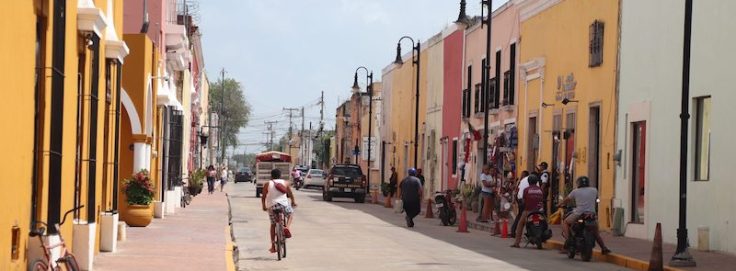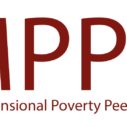
Search
Multidimensional poverty in small areas: Considerations on the measurement of poverty in the municipalities of Mexico and its official character

Official Statistics
The General Law of Social Development (LGDS in Spanish) establishes the creation of the National Council for the Evaluation of Social Development Policy (CONEVAL) in Mexico, which, among its functions, is responsible for establishing guidelines and criteria for the definition, identification, and measurement of poverty. Likewise, this law establishes the obligation for public entities and agencies participating in the execution of social development programmes, to use the information generated by CONEVAL.
This regulatory framework determines the official character of poverty measurement results in Mexico, which are computed at geographical scales associated with the three levels of government: federal, state, and municipal.
Furthermore, according to the LGDS, poverty measurement should be based on information generated by the National Institute of Statistics and Geography (INEGI in Spanish) through censuses, counts, or surveys every five years at the municipal level.
Challenges in its construction
The multidimensional measurement of poverty at the municipal level is based on three analytical dimensions (economic wellbeing, social rights, and territorial context) and uses the same definition to identify if a person is in a situation of multidimensional poverty as at the national and state levels: a person is in a situation of multidimensional poverty when they lack the guarantee of exercising at least one of their social development rights (education, health, social security, housing, food), and their income is insufficient to acquire the goods and services they require to meet their needs.
Its construction has brought significant challenges due to various factors. The first corresponds to the availability of input information at this level of disaggregation: there is no single statistical data source that allows for the estimating of all poverty indicators directly at the municipal level.
Consequently, a second challenge was to identify the statistical and operational techniques required to obtain the indicators for poverty measurement in Mexico.
The third challenge was to integrate the conceptual and technical reviews to have a rigorous, specific, computationally feasible, transparent, and replicable process that would produce reliable poverty estimates for more than two thousand municipalities in the Mexican territory.
For the measurement of municipal poverty, it was decided to apply statistical techniques of estimation in small areas at the unit level together with frequentist prediction intervals that allow the combining of different data sources.
Two sources provided by INEGI (2020) were used: first, the Statistical Model for the Continuity of the Module of Socioeconomic Conditions of the National Survey of Household Income and Expenditure (MEC of MCS-ENIGH), which is representative at the national and subnational level.
This data source provides information to measure the six social deprivations and income, these indicators enable the identification of whether a person is in a situation of poverty or vulnerability.
Second, a sample of the Census of Population and Housing, which is representative at the municipal level, but does not include the necessary information to identify people’s income, or if they are in a situation of deprivation regarding access to food or social security.
The measurement of poverty at the municipal level has helped identifying regions in Mexico that require more urgent action to improve the living conditions for the population.
The statistical models used to obtain the indicators of access to food and social security are logistic regression models at the regional level (grouping of federal entities) using information from MEC of MCS-ENIGH, which can estimate the probability that a person in the survey is deprived and even predict all observations with the available predictor variables (auxiliary information coming from the Census at the municipal level).
These models, as of 2020, have a sensitivity and specificity of around 95% at the national level, in addition to having all their predictors statistically significant. Simultaneously, income estimation is based on a linear mixed-effects model with heteroscedasticity in the errors (EBPH), which obtains estimates at the regional level and predicts observations with available information.
Additionally, a fixed number of income simulations (Monte Carlo theoretical bases) are generated to estimate any function of it and the associated mean square error to assess the statistical accuracy of multidimensional poverty indicators for municipalities.
The fourth and final global challenge was the assessment of result consistency, not only for the most recent period with available municipal poverty information (2020), but also for the comparable series that includes the 2010 and 2015 cuts.
Sixteen indicators were generated for each municipality in the country with available information, covering territories with heterogeneous economic, sociodemographic, and geographical characteristics, where significant changes may have occurred over a decade.
Use in public policies and overview of results
With the latest update of poverty measurement at the municipal level, Mexico has, for the first time, a comparable series of a decade of information at this level of disaggregation, which enables identifying changes that occurred from 2010 to 2020. These results provide a valuable instrument for the Mexican state because they provide evidence-based elements for the design and implementation of public policies that consider specific characteristics of municipalities, thereby strengthening social development policy planning and evaluation.
The measurement of poverty at the municipal level has helped identifying regions in Mexico that require more urgent action to improve the living conditions for the population.
There is a higher concentration of poverty in some specific areas that transcends administrative boundaries, for example, regions historically characterized by socioeconomic disadvantages such as Nayar, Tarahumara, Altos de Chiapas, and the Mixteca, as well as the clustering of poverty in urban spaces.
Another example is that of municipalities with a higher percentage of population in poverty, with a prevalence of indigenous populations engaged in primary sector activities, which are in highland and mountainous areas in the southern part of the country.
Additionally, municipalities with the highest prevalence of poor populations are found in metropolitan areas with high population density: in 2020, half of the poor population was concentrated in 173 municipalities, in 2015 this figure was 185, and in 2010, 199.
In this way, there is an extensive inventory of information that accounts for the social, economic, and geographical diversity of the territory, allowing for a better understanding of the dynamics of poverty within states to prioritize policy efforts focused on overcoming poverty.
General reflection
There is an undeniable need for up-to-date information on poverty at levels of disaggregation that go beyond the design of the most developed instruments and/or the most systematically structured data collection or registration processes, including censuses, counts, surveys, or even administrative records.
This requirement for information presents challenges that can be addressed from the conceptualization of the problem that needs quantification to the implementation of statistical techniques and the interpretation of results, as is the case of poverty measurement in the municipalities of Mexico.
These elements – necessary to improve the quality and precision of data for generating indicators that even more accurately reflect the country’s reality – highlight the need for more robust and transparent processes that, among other characteristics, allow for the consistency and comparability of information, especially when it comes to generating official statistics that will serve for the development of state or federal development plans aimed at the efficient use of public resources.
This article was published in Dimensions 15
















